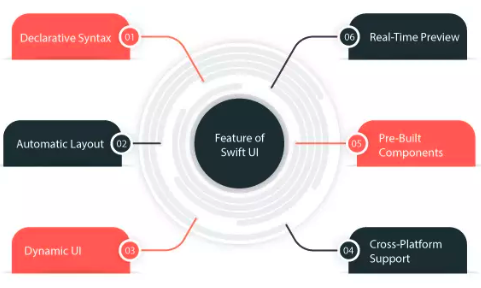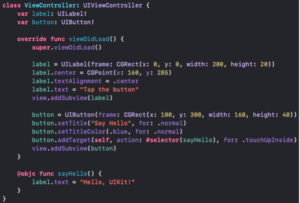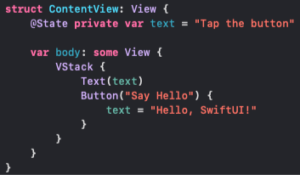
A New Paradigm in iOS Development
SwiftUI, introduced by Apple at WWDC 2019, is a user interface toolkit that allows developers to design applications in a declarative way. It operates in coordination with Swift, the programming language launched by Apple in 2014. This comprehensive analysis explores the differences between SwiftUI and Swift, the pros and cons of each, when to use them, their core capabilities, how SwiftUI can change the experience of coding, and further dives into SwiftUI’s impact on collaboration between designers and developers, and its evolution.
How is SwiftUI different from Swift (UIKit)
Swift is a programming language used to build iOS applications, while SwiftUI is a framework specifically tailored for designing user interfaces. SwiftUI is written in Swift, and though they work seamlessly together, their focus and approach are distinct.
Building a simple button in SwiftUI
Some cons
– Limited Backward Compatibility:
SwiftUI only works with iOS 13 and newer,
so you can’t use it for apps that need to run on older versions.
– Limited Customization:
While it’s easy to make standard components, creating highly custom views might be more challenging.
For example, a unique animated button might require more effort in SwiftUI than in UIKit.
SwiftUI’s Impact on Collaboration Between Designers and Developers
One of the transformative elements of SwiftUI is how it fosters collaboration between designers and developers. The following points detail this relationship:
– Shared Language:
The declarative syntax creates a shared understanding, bridging the gap between design concepts and code implementation.
– Real-time Preview:
Designers can see immediate visual feedback on design changes, making iterations faster.
– Design Consistency:
Cross-platform uniformity ensures that design integrity is maintained across different Apple devices.
– Accessibility Collaboration: Built-in tools allow designers to understand and participate in creating more accessible applications.
Conclusion
SwiftUI represents a significant paradigm shift in iOS application development. It simplifies many aspects of UI design while still integrating seamlessly with Swift.
Its effect on collaboration and its ongoing evolution makes it a compelling subject for further study and adoption.
The decision to use SwiftUI or UIKit will continue to depend on project needs and requirements, with SwiftUI likely becoming increasingly prominent as it continues to mature.

